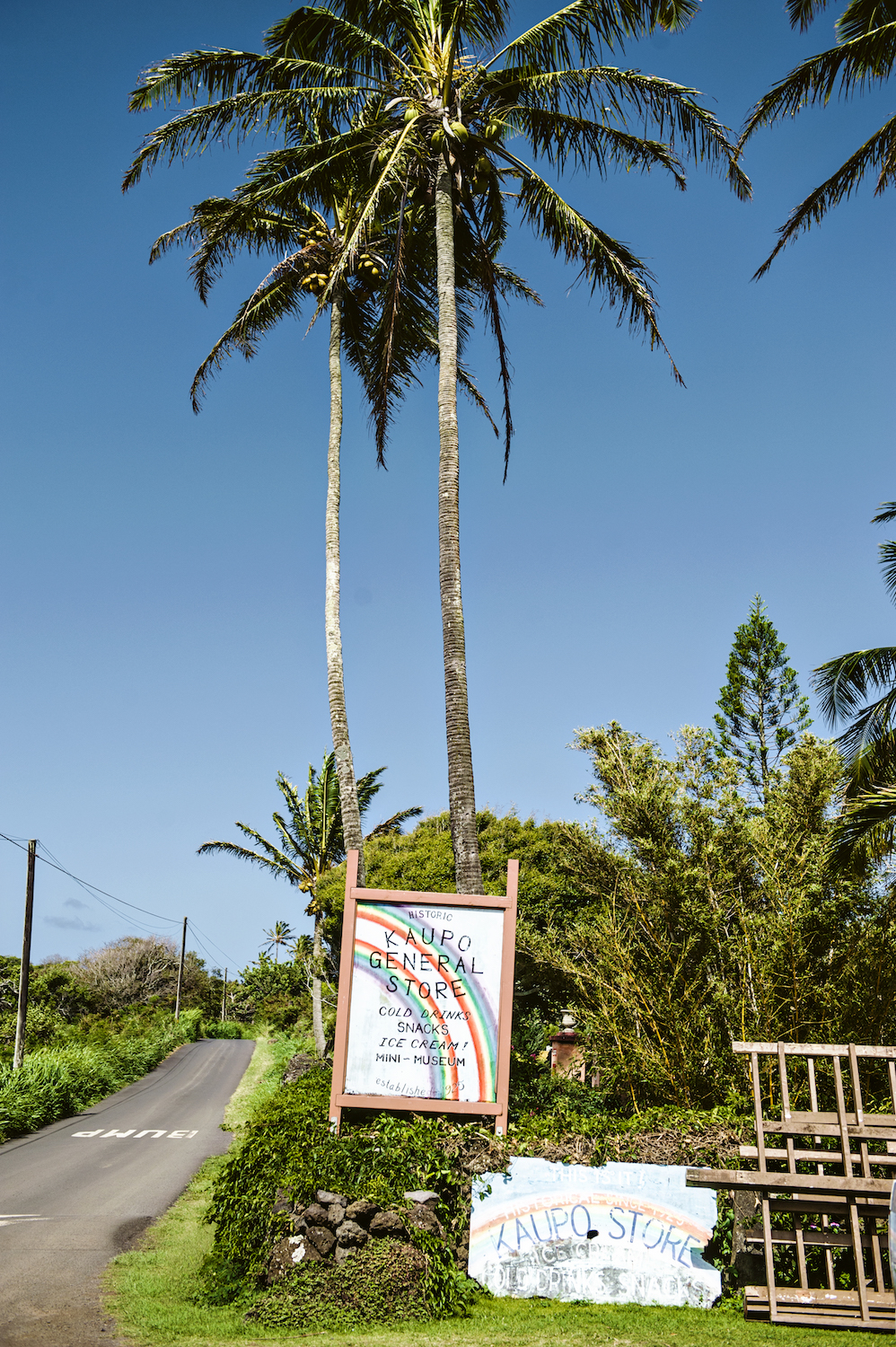Kaupo General Store offers a snapshot of Maui’s history.
Nestled on Maui’s rugged southeastern coastline, along a desolate stretch of highway, is the tiny outpost of Kaupo. If you think your hometown is small, think again: There are roughly 50 full-time residents here. You could call it a one-horse town, except this ranching community has its fair share of four-legged steeds (in fact, horses satisfied much of the population’s transportation needs until the first paved road was constructed in the late 1930s).
Little has changed over the years, including the town’s main attraction, the historic Kaupo General Store, now called the Kaupo Store. The last stop along the famed Road to Hāna before you reach Ulupalakua, the store is a source of relief for travel-weary visitors and locals in need of a cold beverage, snack, or confection. The weathered sign posted above the main entrance advertises “Beer-Wine-Sake,” but inside, there’s a veritable treasure trove of items for sale. In addition to the standard-issue snacks and sundries, you’ll find a colorful assortment of antiques, jewelry, artwork, gifts, keepsakes, postcards, and—a highlight for many—a fully stocked restroom.


But this is so much more than a pit stop. It’s also an artifact museum that honors the heritage of the store and its illustrious founder, Nicholas Yee Soon. Behind the old-fashioned cash register, antique clocks, calendars, photos, and trinkets sit alongside a carefully curated collection of vintage cameras that once belonged to Soon (ironically, it is the most photographed section of the store).
“You cannot discuss the legacy of Kaupo General Store without talking about Nicholas Yee Soon,” says Kathleen Irvine, Soon’s granddaughter. Born in Hawai‘i but educated in China, Soon was a photographer by trade until he moved to Kaupo in the early 1900s. He built the Kaupo General Store by hand in 1925, along with the family home that shares the property.
In pre-statehood Hawai‘i, long before Kaupo’s thriving population began to dwindle, the landing at nearby Nu‘u Bay served as a shipping port. Ships would anchor offshore and smaller boats would ferry cargo from ship to shore. “I was told that the wood for the house and store was floated through the ocean to the landing,” Irvine recalls. “Parts of the store were built from wood salvaged from packing crates.”
When he wasn’t tending to his customers, Soon busied himself with other projects (he also worked as the town’s postmaster). He had the first automobile, a Ford Model T, shipped in pieces to Kaupo, where he reassembled it—and then taught himself how to drive. “He was a fascinating person and a kind grandfather who was interested in photography, animals, and electricity,” says Irvine. “He built his own generators to power the house and store and installed a water tank for water storage. There was a windmill on the property originally … and my mother told me that he raised carrier pigeons.”
Soon served the community until he passed away in 1970, but his legacy lives on at the Kaupo Store, which can see upwards of 100 customers on any given day. It’s not uncommon to find a gaggle of rental cars parked outside or tour buses idling in the dusty parking lot. But you’re just as likely to see a paniolo (cowboy) astride his horse.
The Kaupo Store is located in Hāna just past mile marker 35 on Highway 31.
The store is open 9 a.m.–5 p.m., Monday through Saturday, though hours may be subject to “Hawaiian Time.” Cash only.



